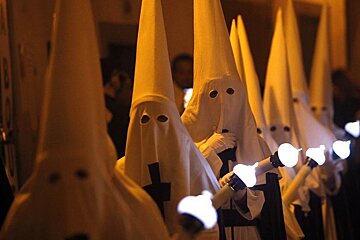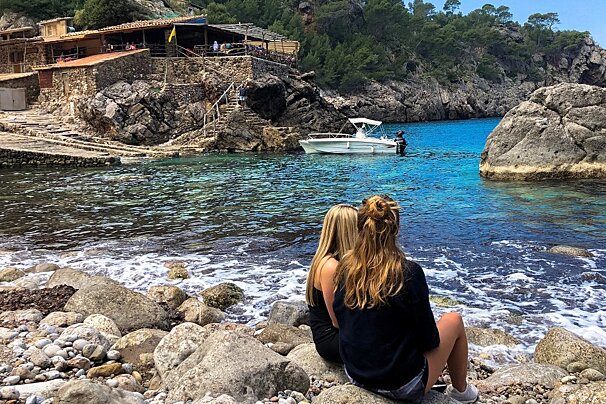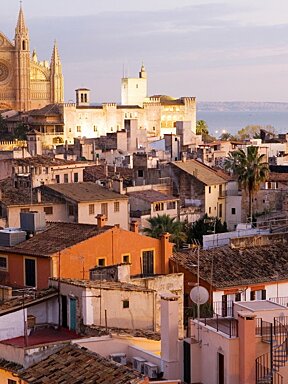
© Ultima Hora

© seemallorca.com

© Illes Balears
Semana Santa (Easter Celebrations)
Island-wide celebrations and parades
Parades of carapunats, or hooded penitents, take place all around the island from Monday to Easter Sunday to mark the Passion of Christ.
On Maundy Thursday - the Thursday before Easter - the biggest processions take place, usually followed by solemn parades through the streets at night. In Palma, the solemn Crist de La Sang procession takes place, during which a representation of the crucified Christ is carried through the streets to remind worshippers of the meaning of Christianity. The start time of the procession in Palma is 19:00, departing from the Anunciació church to the cathedral.
Good Friday sees the reenactment of Christ's Passion in front of Palma cathedral at 12:00. In the evening, the Sant Enterrament (Holy Burial) procession departs from Sant Francesc at 19:00. On Easter Sunday, there is a big mass at Palma cathedral, usually attended by the royal family, as well as a parade where the images of Christ and the Virgin meet after the resurrection.
Sant Llorenç, Felantix, Pollença and Artà also have popular celebrations.
Venue
Across Mallorca island
What to see
Throughout Easter there will be an abundance of 'Panades' and 'Rubiols' to eat. Despite being made from the same basic pastry, they differ greatly in taste. The 'panades' are a round, savoury pie filled with meat, either pork or beef, and peas. The pastry of the sweet rubiols is rolled thinner and filled with pumpkin and served as a desert. Both of these Mallorquin classics are available in bakeries throughout the island.
History
Carapunats, or hooded penitents, organise themselves into brotherhoods or cofradías. Each has its own characteristic form of dress, including a very characteristic cone hood that covers their face, and a float or statue which takes part in the procession and refers to the brotherhood's name. These include La Dolorosa (which represents the Virgin Mary on witnessing the death of her son), El Sant Crist (an image of Christ on the cross) and La Veronica (which refers to the episode in the bible when Jesus meets Veronica and she wipes away his sweat and his face becomes imprinted on her veil. These floats are kept in the parish museum throughout the year.




























